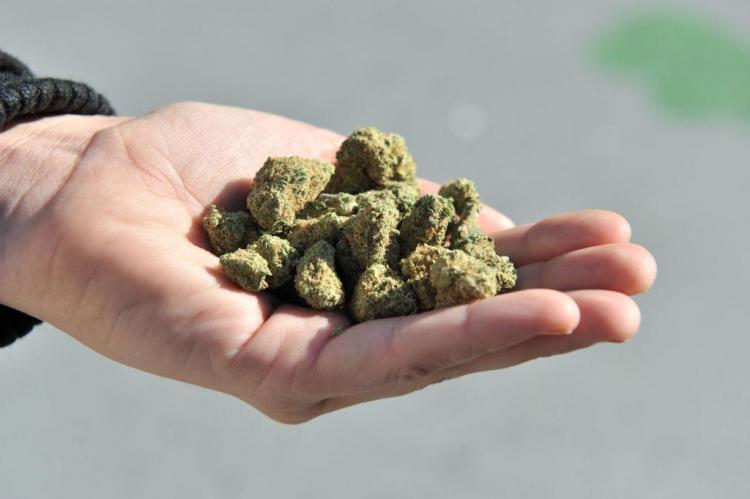How Technology Can Protect Brands And Consumers In Fast-Growth Cannabis Industry
The global cannabis industry is big business and growing fast, expected to reach $100 billion in 2026, a tenfold increase in less than a decade. North America is the dominant market, where almost a dozen more states are considering legalizing cannabis this year. Proof that the industry has emerged from the shadows came amid the coronavirus lockdowns, when across the United States dispensaries remained open because they were considered “essential” businesses.
But with all this additional business comes extra responsibility. The cannabis industry must prioritize safety and security to protect consumers and brands from dangerous counterfeit goods. Just as consumers are becoming increasingly sophisticated in their expectations for calibrated cannabis experiences, so too the industry must mature to ensure fake brands and toxic materials stay out of the booming market.
The industry needs to get “smart.” From the phone to the TV, our world is now full of intelligent, connected devices, so it is high time that cannabis vaporizers also go high-tech. And, as with so many innovations these days, the solution is available with a combination of software and hardware, where smart chips in vape pod systems can detect counterfeit products. In other words, the industry can use scalable solutions that do not have to rely on expensive smartphone-connected technology to protect consumers.
Top cannabis companies are acutely aware that they will lose customers if their brand is unfairly associated with a fake product that delivers a disappointing experience -- or worse, a health hazard. They pride themselves in deploying the latest technology to customize their products for just the right temperature-controlled dosing levels, heating profiles, and even plume size.
That same level of sophistication can keep counterfeit products at bay. When a consumer plugs in a smart pod to a battery and an alarm sounds, they do not concern themselves with the details of the 256-bit cryptographic authentication algorithm protecting them from counterfeit cannabis. What they do care about is having a safe experience -- and the industry must work to deliver that.
Safe and secure
This year, campaigners across the United States will seek to draw attention to the safety issues of cannabis consumption on both sides of the argument. The debate is not simply academic. An outbreak of lung injuries from mainly tobacco-related vaping hospitalized more than 2,000 Americans last year, highlighting the need for better control over exactly what is being consumed. With about a dozen U.S. states considering legalizing cannabis, brands can earn the trust of consumers -- and voters -- by taking care to protect their products and by raising the understanding of cannabis consumption.
If you cook a steak at the right temperature, you enjoy great-tasting meat. But if you keep the steak on the grill for too long, that same meat becomes carcinogenic. It may surprise many but a similar phenomenon was likely behind some of last year’s lung injuries where illegal suppliers added Vitamin E to the cannabis they sold. While it is fine to rub vitamin E on your skin, it becomes toxic when it is vaporized. That is why smart-chip cartridges that are authenticated when inserted into a battery can provide simple safety and anti-counterfeiting protections.
In fact, temperature control and managing thermal cycles in distillate -- the base ingredient of most pods -- is also key to a defined cannabis brand experience. Just the way wine or beer is supposed to be served chilled or at room temperature depending on the type, distillate and the full spectrum of cannabidiol (CBD) needs to be heated correctly.
The rate at which the material passes through its thermal cycle helps determine the duration of the flavor for the cannabis consumer. Done badly with old-style cartridges, it can be like ordering a glass of wine from your bartender only to get the intensity of a shot. When it comes to wine, brands ensure drinkers know the difference between a white Chardonnay and a red Malbec. So imagine if you bought a bottle of your favorite white, only for it to be counterfeit and end up tasting like Bourbon whiskey.
Lighting the way
Unfortunately, the technology brought to bear on vaporizing in the industry is more like a horse-and-buggy when we need automobile options. The technology is needed to deliver security against counterfeiting as well as safety against health risks. In its attempts to go high-tech, the industry has created links to apps and required Bluetooth connections that both raise prices and unnecessary privacy concerns. But as sophisticated as they sound, these solutions do not have to be expensive and drive customers away.
A simple enough combination of a smart chip and pod can solve cannabis industry challenges. Furthermore, it can light the way for the nicotine sector to follow. Imagine that the next time there is an outbreak of vaping for under-age smokers at a high school, the principal would have recourse to stem the problem. She could use the device to locate which store was supplying the teenagers with the vapes. The same authentication technology can be developed so that chips record the point of sale -- whether that is CBD, cannabis or even tobacco.
- Log in to post comments

